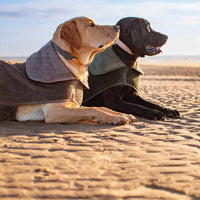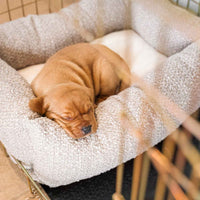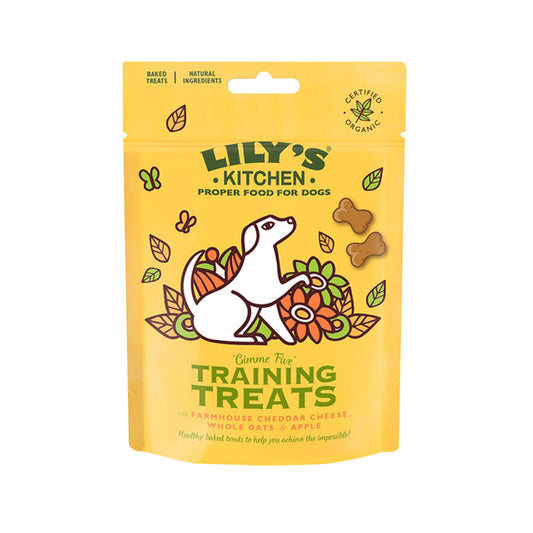It’s no secret the UK is a nation of dog lovers. In fact, according to recent data, a third of UK households (34%) own a dog, with around 10 million owners in total across the country.
With an abundance of amazing countryside and coastal locations quite literally on our doorstep, Brits are spoilt for choice when it comes to places to explore with their four-legged friends.
And whilst the sights and sounds of the UK’s towns and cities may be vast in contrast, many are more then well well-equipped to welcome our beloved pooches on their adventures – and their owners too of course!
With this in mind, we were keen to find out which of the UK’s more urban locations were the most dog-friendly in the country, and so we compared the following ‘dog-friendly’ factors across 48 UK towns and cities in order to see where is best. We looked at:
- Number of dog-friendly restaurants and cafes
- Number of green spaces and parks in each city
- Number of vets per city that treat dogs
- Number of local pet shops
- Number of dog walkers and sitters
- Number of dog groomers
- Number of dog-friendly shops
But which UK towns and cities claimed a top spot on our list? Read on to find out...
The UK’s Top Dog-Friendly Towns and Cities
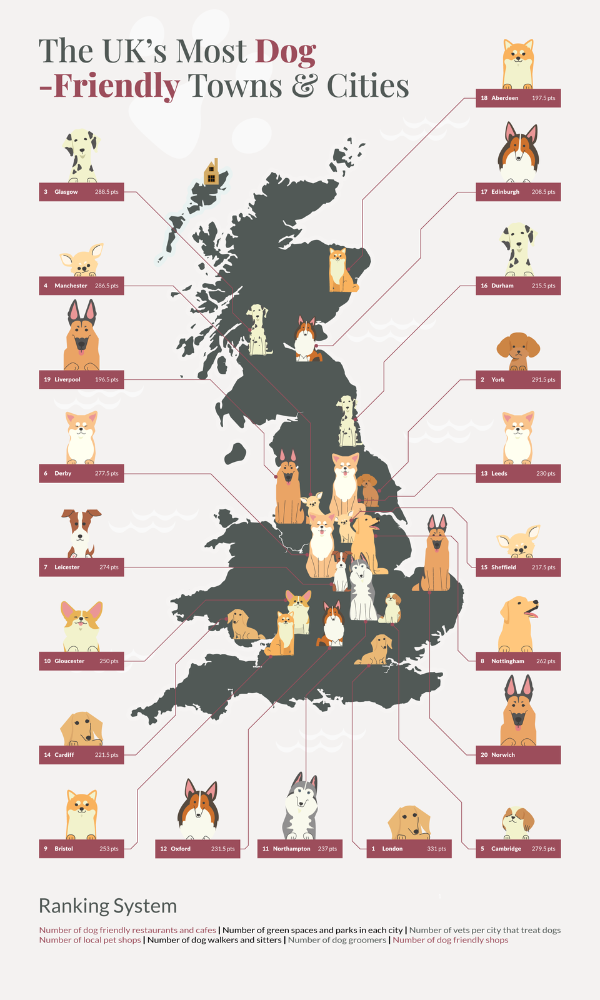
According to our research, the top dog-friendly cities in the UK are as follows:
1. London
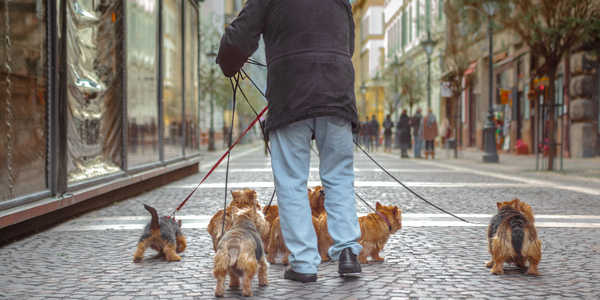
Claiming first place is the UK’s bustling capital city, scoring a significant 99% (331 points) dog-friendly rating overall.
Boasting over 3,000 amazing parks and green spaces such as Hyde Park and Chiswick House and Gardens, and 513 dog-friendly cafes such as Ozone in Shoreditch and St. Clements in Parsons Green, London is the perfect city for a day out with your pooch.
London also has some of the best shopping destinations in the UK, and luckily, 141 of these shops will allow your pet to accompany you whilst you browse, including the iconic, Liberty.
2. York

The beautiful northern city of York came in second place, with a respectable 86% dog-friendly score (291.5 points).
The northern city boasts 45 dog-friendly cafes and restaurants including Partisan and Fossgate Social, 326 dog-friendly vets, and 124 pet shops too, making it one of the top places for dogs and their owners.
Adventurous pups can also roam around any of York’s 25 parks, gardens, and green spaces for a break away from the cobbled streets. We'd recommend York Knavesmire which boasts a substantial green space where your beloved pet can blow off some steam after a long day exploring the city.
3. Glasgow

Over in the heart of Scotland, Glasgow has been named the third most ‘dog-friendly’ city in the UK, scoring 86% (288.5 points) in total.
With over 90 parks and green spaces to explore, including the beautiful Kelvingrove Park, it’s no wonder Glasgow is high up on the list of cities that are perfect for a trip out with your four-legged companion.
There are also many dog walkers and sitters (78) who will happily look after your furry friend whilst you delve into the culture and vibrance of the city.
4. Manchester

Next on our list is another northern city, Manchester, scoring an admirable 85% dog-friendly rating (286.5 points). Aside from being one of the largest metropolitan cities in the North, Manchester is home to 160 parks and green spaces to visit with your pooch.
In addition, there are 66 restaurants and cafés that will welcome your pet, such as Alberts Schloss, that even offers designated dog tables to reserve.
5. Cambridge

In fifth place is Cambridge, scoring 83% (279.5 points) altogether. With 92 parks and green spaces, such as Alexandra Gardens,
Cambridge provides an ideal setting to bring your canine companion for the day. In addition to this, Cambridge was found to have a high number of veterinary practices (64), which provides that extra layer of safety when visiting the city.
Other top spots for dogs
The cities of Derby (83%/277.5 points), Leicester (82%/274 points), Nottingham (78%/262 points), Bristol (75%/253 points) and Gloucester (74%/250 points) also made their way onto our top 10 ‘dog-friendly’ cities in the UK list, having proven to be great spots to visit with your pup based on our ranking.
The Full List of Rankings – and the Not Quite as Dog-Friendly Locations
Here is the full list of rankings, according to our study. So, where did your town or city place?
| Overall Rank | City/Town | Overall Points | Percentage Score |
|---|---|---|---|
| 1 | London | 331 | 99% |
| 2 | York | 291.5 | 87% |
| 3 | Glasgow | 288.5 | 86% |
| 4 | Manchester | 286.5 | 85% |
| 5 | Cambridge | 279.5 | 83% |
| 6 | Derby | 277.5 | 83% |
| 7 | Leicester | 274 | 82% |
| 8 | Nottingham | 262 | 78% |
| 9 | Bristol | 253 | 75% |
| 10 | Gloucester | 250 | 74% |
| 11 | Northampton | 237 | 71% |
| 12 | Oxford | 231.5 | 69% |
| 13 | Leeds | 230 | 68% |
| 14 | Cardiff | 221.5 | 66% |
| 15 | Sheffield | 217.5 | 65% |
| 16 | Durham | 216.5 | 64% |
| 17 | Edinburgh | 208.5 | 62% |
| 18 | Aberdeen | 197.5 | 59% |
| 19 | Liverpool | 196.5 | 58% |
| 20 | Norwich | 191.5 | 57% |
| 21 | Birmingham | 189 | 56% |
| 22 | Newcastle Upon Tyne | 179 | 53% |
| 23 | Swansea | 176 | 52% |
| 24 | Plymouth | 169 | 50% |
| 25 | Brighton | 167 | 50% |
| 26 | Exeter | 156 | 46% |
| 27 | Kingston Upon Hull | 155 | 46% |
| 28 | Southampton | 153.5 | 46% |
| 29 | Peterborough | 149 | 44% |
| 30 | Belfast | 143 | 43% |
| 31 | Coventry | 140.5 | 42% |
| 32 | Warrington | 133.5 | 40% |
| 33 | Newport | 124 | 37% |
| 34 | Bath | 122.5 | 36% |
| 35 | St Albans | 114 | 34% |
| 36 | Bradford | 111.5 | 33% |
| 37 | Chelmsford | 109.5 | 33% |
| 38 | Blackpool | 108.5 | 32% |
| 39 | Carlisle | 107 | 32% |
| 40 | Dundee | 92 | 27% |
| 41 | Wrexham | 83 | 25% |
| 42 | Portsmouth | 70.5 | 21% |
| 43 | Wolverhampton | 56 | 17% |
| 44 | Walsall | 55 | 16% |
| 45 | Sunderland | 49.5 | 15% |
| 46 | Lisburn | 49 | 15% |
| 47 | Middlesborough | 41 | 12% |
| 48 | Derry | 39 | 12% |
Understandably, not all locations are likely to have quite as many dog-friendly offerings for our four-legged friends right now, but that doesn’t mean they won’t in the future.
With just four dog-friendly cafés and restaurants, Derry was found to be one of the locations on the list that was not quite as dog-friendly. The city also scored a low number of points due to having just 17 vets that treat dogs.
Middlesborough also ranked on the lower end of the table, securing just 12% (41 points) in total due to its low numbers of dog-friendly cafes and restaurants, as well as having just 12 parks and green spaces available for dogs and their owners to enjoy.
It’s worth keeping in mind that despite their lower scores, the towns and cities that placed lower down our list are still likely to be great places to raise a pup.
The Perfect Pups for Urban living
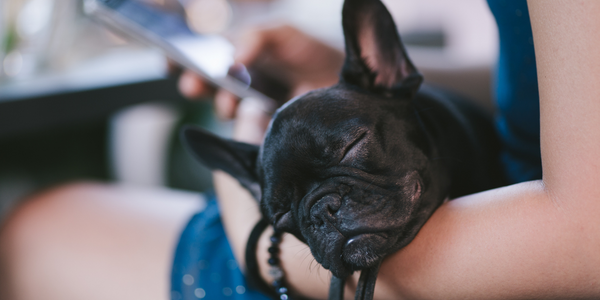
Whether you’re planning a short visit to a bustling town or city for just a day or two, or perhaps you are already living in a more urban area and are ready to bring a pup into your home, it’s integral that you do your research to ensure you find the perfect dog to suit your lifestyle.
According to Statista data, the most popular dog breed amongst Brits is the Labrador Retriever, with 61,559 records of this breed registered in 2021.
Labs are a fairly active breed and so may not suit a more sedentary or limited lifestyle in regard to getting outdoors. That said, for those living in towns and cities where green space is in abundance, a Labrador could certainly live a happy and contented life, as long as you also have plenty of space for them to relax with you at home.
In second place is the beloved French Bulldog or ‘Frenchies’ as they are commonly known. There were 54,074 registrations of this breed in the UK last year.
Thanks to their laid-back nature, love of shorter walks, and petite stature, Frenchies can make great pets for city living. French Bulldogs are super affectionate and love to be around people meaning they can happily squeeze into a cosier living space often associated with city living.
With a further 38,910 registrations in 2021, Cocker Spaniels are the UK’s third most popular dog breed, followed by Bulldogs (15,403) and Miniature smooth-haired Dachshunds (14,820).
Similarly to French Bulldogs, Dachshunds make a great pet for city living thanks to their small size, making them a great fit for apartment living where space is limited. Like most dogs, potential owners will need to be mindful of ensuring they get substantial time to explore outdoors to ensure they don’t become restless or noisy due to pent-up energy – a typical Dachshund trait.
Pugs (6,122) also made it to the top 10 leader board and are another great example of breeds that work well in a town or city environment. Due to their extremely loving, loyal nature, Pugs can make the perfect pet for families and are happiest when they’re around their owners.
Like most dogs, Pugs can be rather playful and enjoy a so-called mad half hour, also known as zoomies. That said, the breed is known for their love of naps, getting in 14 hours a day on average, making them an excellent choice for city-dwellers who prefer shorter, more frequent walks.
Our Top Tips for Urban Living with a Four-Legged Friend
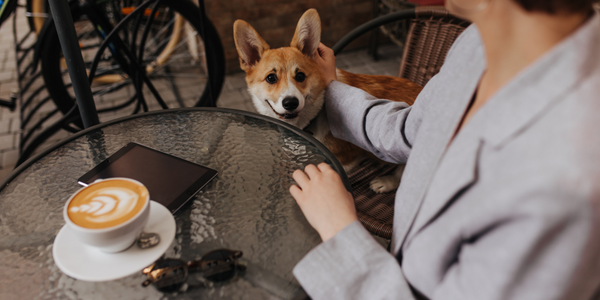
Exploring a new town or city can be exciting for both owner and dog alike. Much like with humans, visiting busier locations can be somewhat of a sensory overload for your four-legged friend due to all the new sights, smells, and noises that come along with them.
Alongside ensuring you pack plenty of treats, toys, and other items that offer comfort and familiarity for your pup, starting work on basic training cues and ensuring your dog is traffic savvy as early as possible for their adventures in the big city is key.
Where possible, it’s always a good idea to start training your dog at a young age and really get them used to reacting quickly to your commands in a busy, more distracting environment.
Basic Cues to Ensure that Your Dog Thrives in a Busy Town or City
- Sit: This one is a staple command in the world of dog training. It’s a great cue for your pooch to master, as this will hugely come in handy for those moments when you would like your dog to wait quietly, such as on public transport or in restaurants and cafes.
- Wait: Similarly to ‘sit’, ‘wait’ is another key command for your canine to learn. This can be pivotal for traffic safety, with increased road and foot traffic in the busy city.
- Leave: City streets are full of unsafe objects, litter, and germ-ridden food remnants. Teaching your dog to drop anything that could be dangerous to them can be crucial to their health. Top tip: remember to reward with a treat!
- Curbing: Encouraging your dog to do their ‘business’ on the curb instead of the pavement is the essence of this term. Essentially, this ensures that your dog doesn’t leave a mess in the middle of the path where people tend to walk. To achieve this, gently lead them toward the curb when you see your pooch sniffing around for a place to go.
For those who may be visiting a bustling city from a much quieter location, it’s important to consider giving your pet time to familiarise themselves with all the sights, smells, and noises in their surroundings. Slowly easing them into this new environment can be crucial when ensuring that your dog is calm and comfortable in the city.
Another top tip is also investing in a warm coat to keep your doggy warm in colder weather. Like humans, dogs are also susceptible to illness brought on by the cold, and therefore need to stay wrapped up in these conditions.
After a long day out in the city, your pup still will need their own space to roam at home. Even if your living situation is more ‘snug’, having an area of a room that they recognise as their own, containing their favourite toys and a bed, will help to keep them relaxed. You may want to consider purchasing a crate for your dog to act as this safe space.
Must-Have Items for a Day in the Big City
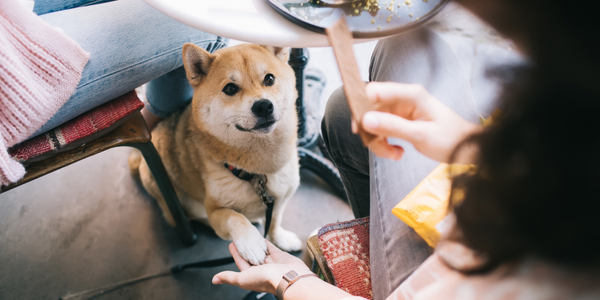
Here are just a few items that we believe can help to make a day out in the city with your dog that little bit easier.
A pet carrier: For particularly nervous dogs who love their own space, a pet carrier is one of the single most important accessories to own when traveling with your pooch. These ensure that your dog is safe and sound when driving in the car, traveling by train or bus, or even just giving them a safe place to hide away from crowded shops, cafes, and eateries.
Toys: Items such as balls and chew toys are always great to have in your pocket or bag in case you stumble upon a green space with your excitable pup. These can also be great motivators when encouraging your dog to follow those all-important commands.
Dog poo bags: This one speaks for itself. When your dog needs to ‘go’ in a public place, you will need a poo bag on hand, so make sure you have plenty stashed away within easy reach, so you’re not caught short when nature calls.
Plenty of snacks: Just like humans, your furry friend will enjoy a nice snack on the go. This is another great way to encourage your pet to follow cues such as ‘sit’ and ‘wait’ when out and about. So, before heading out on your adventures, remember to pack plenty of their favourite treats to reward that good behaviour!
Portable water bottle and travel water bowl: Much like you and I, dogs need to stay hydrated and this is especially important when traveling to a new place. A travel water bottle is a guaranteed way to always have water on hand, and a water bowl makes drinking this far more comfortable for your pet.
Conclusion
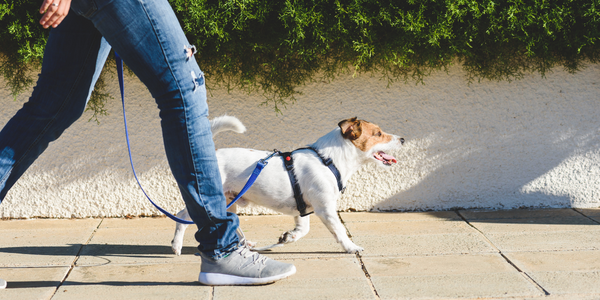
Here at Lords & Labradors, we pride ourselves on putting your dog’s well-being first, and we know you’ll be eager to ensure your beloved pup feels both safe and confident when joining you on your adventures.
By taking the time to work on training for specific situations you know you’re likely to encounter in busier places, as well as slowly introducing your dog to more of the sights and sounds they may come across along the way. Luckily, dogs are extremely adaptive, so all your hard work will certainly pay off and help to reduce the stress levels for both you and your pooch, and your dog will surely be grateful for it.
We hope that this study will prompt you to visit some of the places on our list of top dog-friendly towns and cities. Why not share pictures of your adventures with us on Instagram? Tag us @lordsandlabradors and use the hashtag #landlfriends


























